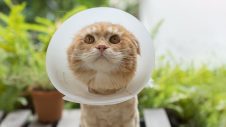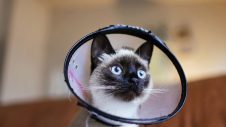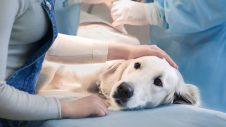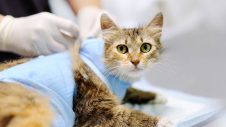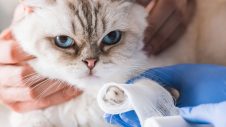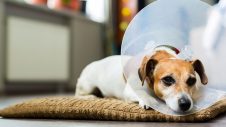WHAT ARE THE ADVANTAGES OF HAVING MY PET DESEXED?
Dogs and cats on heat attract a surprising number of interested members of the opposite sex, commonly leading to fights, disturbed nights for owners and often, irate neighbours. Discharges from dogs in ‘heat’ can be a nuisance, especially with indoor pets. The risk of uterine infections is high in non-desexed females and that risk increases with age. Mammary cancer (breast cancer) incidence in later life is much lower if the pet is desexed before puberty (6 months). Unwanted puppies and kittens can be an emotional and financial burden and can add to the already enormous problem of stray animals. Stray dogs also present a public health risk from droppings and dog bites. It is every pet owner’s responsibility to ensure that their pet does not add to these problems.
WHEN IS IT BEST TO HAVE MY PET DESEXED?
Generally it is considered best done before puberty (around 6 months of age). This avoids the problems of caring for a pet in season and reduced the risk of unwanted pregnancy.
WHAT DO I NEED TO DO?
You should arrange your pet’s surgery for any weekday, preferably giving a couple of days notice. We will admit your pet during consulting hours on the morning of the surgery or the night before if that is more convenient. Your pet should be fasted prior to the anaesthetic so give a small meal the night before then remove food, allow access to water overnight. No food or water should be given on the morning of surgery.
THE OPERATION – AN OUTLINE
Desexing surgery involves intra-abdominal surgery under a general anaesthetic. Before the anaesthetic your pet will be given a “pre-med” which is a combination of drugs to relax them and prepare them for the general anaesthetic. The combinations will vary depending on your pet’s species and age.
The anaesthetic begins with a short acting intravenous injection and in most cases your pet will then be maintained by inhalation of anaesthetic gases. Surgical staff will monitor your pet’s species and age.
The anaesthetic begins with a short acting intravenous injection and in most cases your pet will then be maintained by inhalation of anaesthetic gases. Surgical staff will monitor your pet’s anaesthetic throughout the procedure. In addition pets are given pain relief before surgery starts so the surgery and recovery are non-painful.
The surgical site, usually along the midline of the belly, will be clipped then cleaned and sterilised with an antiseptic solution.
Sterile drapes are used to cover the surgical site and prevent hair etc. from contaminating the cleaned area. An incision is made through the skin, fat and connective tissue lying beneath it, continuing through the muscles of the abdominal wall and the lining of the abdominal cavity. The ovaries are located and the main blood vessels supplying them are “ligated” or tied off after clamping. The same is done for the blood vessels supplying the uterus (all internal sutures/stitches are tied using a dissolving suture material). Once all blood vessels have been tied, both ovaries and the majority of the uterus are removed from the abdomen.
Again using a dissolving suture material, the abdominal wall muscles are stitched together then the fat and connective tissue lying beneath the skin. Generally the sutures/stitches used in the skin are of a non-absorbable type which will require removal in 10-14 days.
Your pet is then woken from the anaesthetic and will have some time in hospital to recover (generally a few hours is all that is required). For the first 24-48 hours, pets will be a little groggy and uncoordinated but should soon return to normal. They will need to be kept clean, warm and dry during this time. Usually food and water should be offered. Their activity level should be kept to a minimum until after the sutures are removed as this will promote faster healing of the surgical site and minimise the risk of infection.
Please remember, an important part of a successful spay is the home-care provided.
COMMON FALLACIES REGARDING DESEXING
Bitches and queens will make better pets if they have had a litter first.
NOT TRUE!
There is no evidence to support this commonly heard tale.
After my pet has been desexed it will become fat.
This need not be so. After desexing, pets usually require less food to maintain body weight so you may need to reduce the amount you feed (around 20%) and /or increase the amount of exercise your pet has.

 Greencross Vets
Greencross Vets 